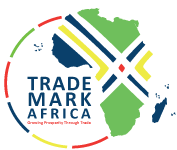Fried fish, fried beef, chicken and fried bananas; oils and fats are as much part of East African life as blue skies and rain showers. But until recently, what you bought in Uganda to prepare your matoke with and what you used in Tanzania to fry your fish might have looked the same from the label but have been of vastly differing qualities. And none of East Africa’s 140 million citizens might have been the wiser. But not for much longer, the East African Community (EAC) Secretariat, with support from TradeMark Africa (TMA), met in the Burundian capital, Bujumbura; in March, for a regional technical committee meeting on oil seeds, edible oils and fats sector held to harmonise standards of this key ingredient of the daily diet. “Harmonisation of standards for all sorts of things is one of the building blocks on which to build a strong, integrated East African Community,” said José Maciel, Director of Trade Facilitation (Non-Transport), at TradeMark Africa (TMA). “It’s one of the reasons that the European Economic Community has become the power house that it is. You need to agree on basic standards for goods to create a level playing field on which traders and consumers will both benefit.” The edible fats and oils sector is a part of the larger food and beverage industry that commands a US$ 2 billion East African regional market value and, like the regional economy itself, is fast growing. There is strong demand for oils and fats but not...
East Africa set to adopt the harmonized edible oil standard
Posted on: June 26, 2014
Posted on: June 26, 2014
















